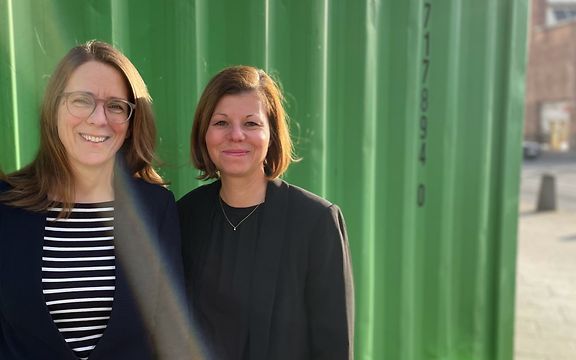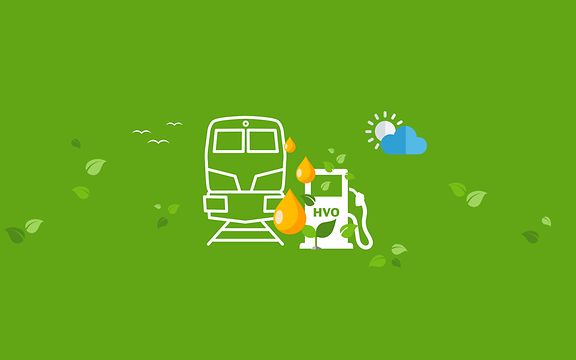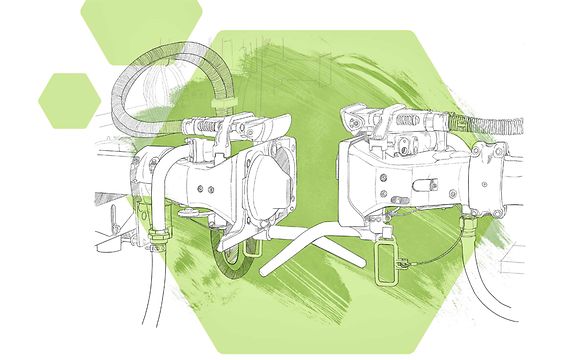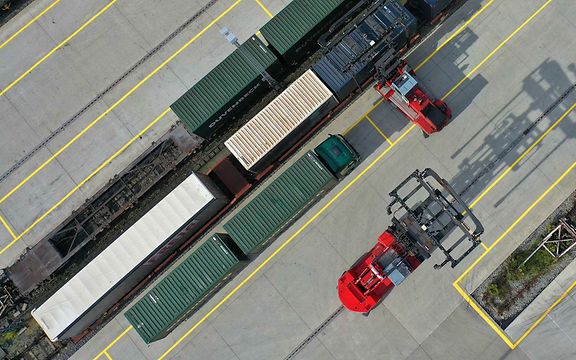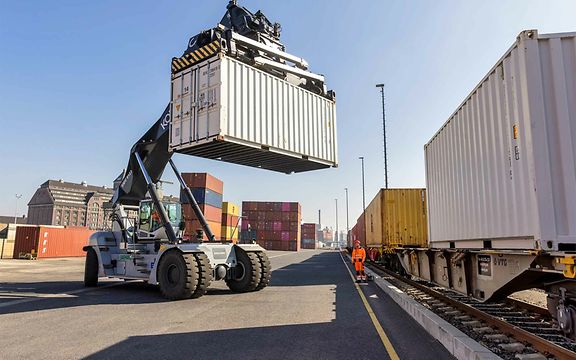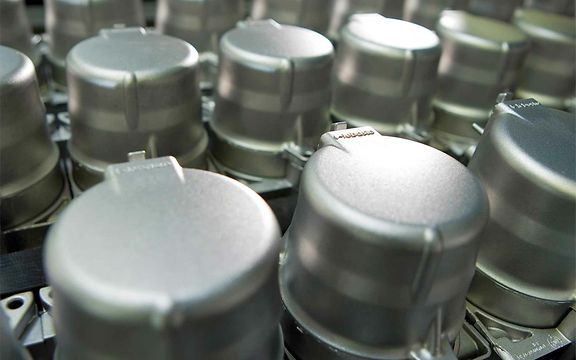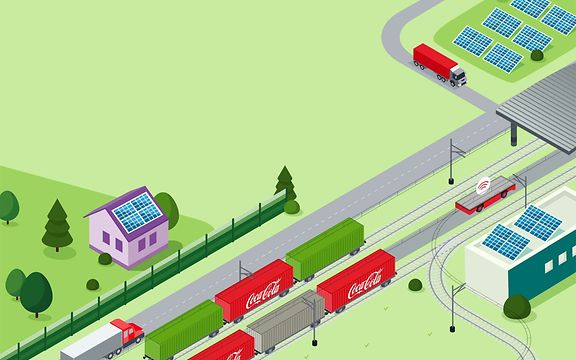Bavaria’s chemicals triangle sees growth
As the route between Munich and Burghausen via Mühldorf is upgraded, climate-neutral supply chains are becoming a real possibility.
According to DB Cargo CEO Dr Sigrid Nikutta, line upgrade 38 between Munich and Freilassing via Mühldorf will bring climate-neutrality and lower noise levels to freight transport in the region. On her way to Bavaria’s chemicals triangle, she made a pit stop at the information centre for line upgrade 38 at Mühldorf station. Here, project manager Klaus-Peter Zellmer, Sigrid Nikutta and politicians and business leaders provided an overview of the current status of the major project to upgrade the line. The railway upgrade is made up of many smaller subprojects which extend from the Greater Munich area to south-eastern Bavaria and the region along the border between Germany and Austria. By 2030, 145 continuous kilometres of the route will be electrified and large parts of it will be upgraded to double track.
Line upgrade 38
Double-tracking and electrificationUntil now, the route between Munich and Freilassing via Mühldorf has been largely single-track and unelectrified. The same goes for the branch from Tüssling to Burghausen. In order to meet current needs and, in particular, future ones, we are installing electric overhead lines on a 145 km section of this route. A total of 103 km will be upgraded to double track between Markt Schwaben and Ampfing and between Tüssling and Freilassing. Once complete, the upgrade will increase the line speed from its current maximum of 120–140 km/h to 200 km/h.
Railway stations, technology and more structuresDB will also renovate and upgrade stations to cutting-edge standards, and most of them will be barrier-free to make travelling easier for passengers with limited mobility. Modern control-command and signalling equipment and an increased number of signal blocks will translate into shorter intervals between trains. In turn, this will improve the overall quality and quantity of services for passengers travelling to and from the region.
All in all, the line upgrade will involve renovating or rebuilding 166 bridges, 23 level crossings and 19 railway stations. To provide superior protection from train noise to residents near the route, we will also implement active and passive noise-control measures at select locations to meet the legal requirements.
Completed and ongoing subprojectsSeveral projects have already been successfully concluded: the bypass around Berg am Laim has been completed, as has the installation of ESTW electronic interlockings in Dorfen and Altötting. The route section between Ampfing and Altmühldorf has been upgraded to double track. The new double-track section between Altmühldorf and Tüssling entered into service in December 2017. Active noise-control measures (in this case, noise barriers) were erected in Ampfing and Tüssling.
In December 2017, a third track entered service in Freilassing. Also in Freilassing, three railway bridges were widened and modified, and extensive work took place on the tracks, overhead lines and signals. A single-track bridge was constructed to supplement the existing bridge with listed status over the Saalach river.
Munich rail hubIn connection with line upgrade 38, DB is performing additional closely related work in the Greater Munich region. To improve connections to Munich Airport, DB Netz AG is moving forward with the Erding ring closure project, which will provide access to the airport from Erding. It is also upgrading the line to Markt Schwaben and building a new connecting link near Walpertskirchen. East of Munich, freight trains running from Rosenheim and the Brenner Pass will be able to travel directly to Mühldorf via the Truderinger curve without any detours around Munich or changes of direction at Munich East marshalling yard. Since it was put into service in December 2018, a new curve near Neufahrn has provided a faster link for trains travelling westbound or northbound from Munich Airport en route to Freising.
These upgrades will benefit not just passenger transport, but freight transport as well. “Even today, freight trains produce roughly 80% less CO2e than road transport,” says Nikutta. “Once the tracks have been electrified, trains can be supplied with 100% green traction power. Living conditions for residents along the route will also improve thanks to noise control, new electric locomotives and low-noise freight wagons.”
Freight transport to grow by 70%
Bernhard Langhammer, spokesperson for Chemdelta Bavaria, announced that the initiative had forecast growth of 70% for freight transport in the chemicals triangle between 2020 and 2030. “Line upgrade 38 must therefore be completed as scheduled by 2030 with no delays,” said Langhammer. “We will work with the chemicals triangle to implement these long-term growth targets in climate-neutral fashion,” said Nikutta.
Bavarian chemicals triangle
The region surrounding Aschau, Burghausen, Burgkirchen, Tittmoning, Töging, Trostberg and Waldkraiburg is one of the most successful technology-focussed regions in Bavaria. A branch of the Transalpine Pipeline (running from Trieste to Karlsruhe via Ingolstadt) supplies the region with oil. Hydroelectric power plants along the River Inn and the Alz Canal generate electricity to meet the region's needs. Twenty-five companies in the chemicals and pharmaceuticals industries, including Wacker Chemie, Linde Gas, Borealis and BASF, employ more than 20,000 people there. The chemicals group OMV operates a natural gas refinery in Burghausen.
From Burghausen to the seaports
Commissioned in 2014, the Burghausen combined-transport terminal is built to accommodate growth. The terminal is operated by DUSS (short for Deutsche Umschlaggesellschaft Schiene-Strasse), DB Schenker BTT and freight forwarder Karl Schmidt. Since the beginning of 2021, the terminal’s two gantry cranes have transhipped 45,000 containers. Tom Schimmel is the head of the terminal. “That puts us over pre-coronavirus levels. Our terminal is built to accommodate growth. We can tranship up to 72,000 load units per year,” says Schimmel. Freight trains depart Burghausen for the seaports in Hamburg, Bremerhaven and the Italian city of Trieste, plus the Munich terminal, where the trains’ cargo begins the next leg of its journey. The Burghausen terminal’s customers include Wacker and more than 100 small and medium-sized companies from the surrounding districts, including Salzburg in Austria.
